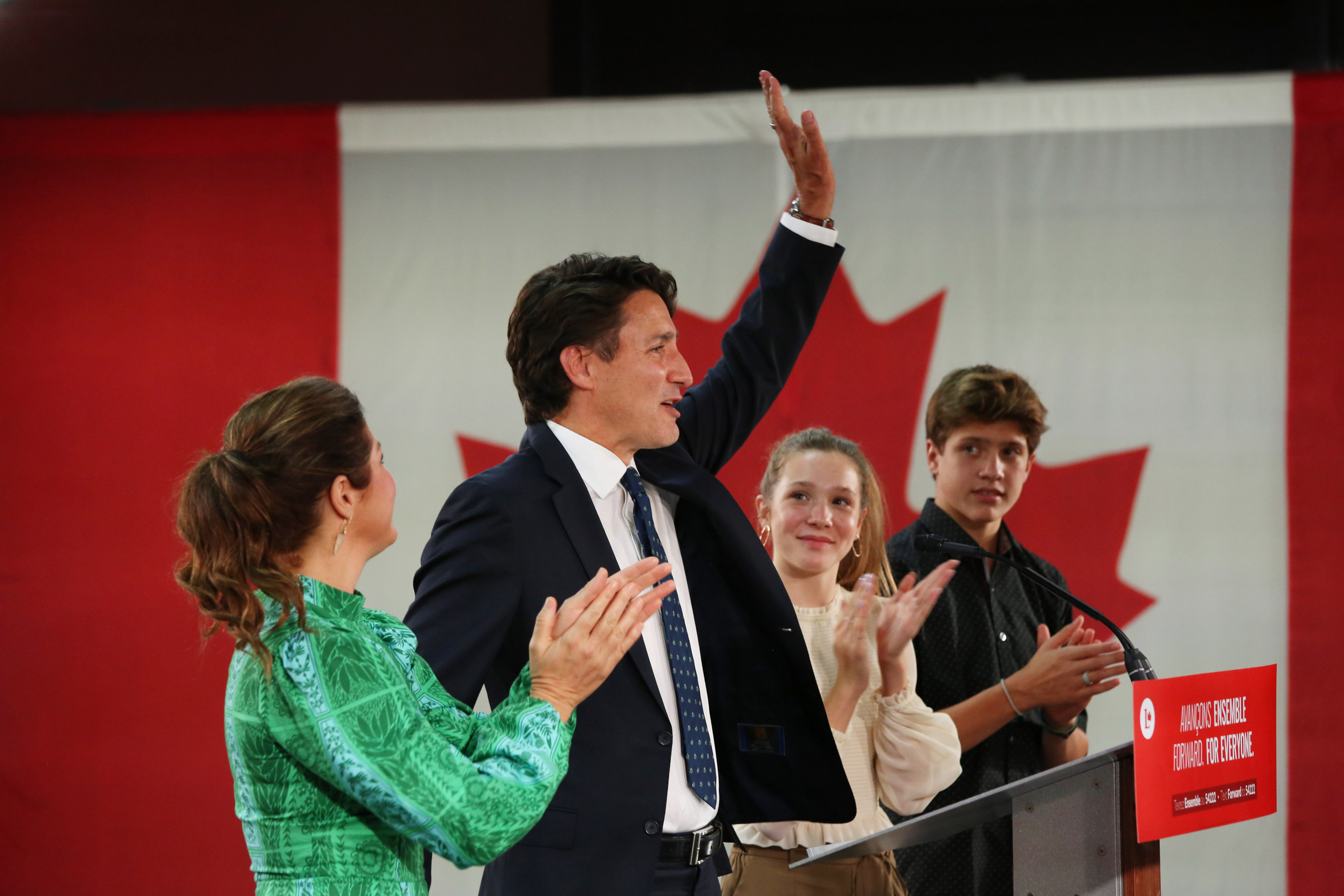Canadians can mark it on their calendars: Sept. 20, 2021, was Groundhog Day.
“The more things change, the more they remain the same” is the old adage from French writer Jean-Baptiste Alphonse Karr. Despite emphatically stating that he would not force the country into an election two years ahead of schedule, Prime Minister Justin Trudeau desired to build upon his power and get the nation to the polling stations. After spending $600 million for an election that experts say nobody wanted, the results are in: Everything stays the same, plus or minus a few seats for the leading federal parties. Was this an expensive boondoggle or a shining example of democracy?
A Groundhog Day Minority Government
 Within an hour after polls closed in the eastern half of Canada, state broadcaster CBC News declared that Prime Minister Justin Trudeau and the Liberals would secure a minority government. From the Maritimes to the Prairies to the territories, voters gave the Grits another mandate with 156 seats in the House of Commons – one more than Trudeau had before the election.
Within an hour after polls closed in the eastern half of Canada, state broadcaster CBC News declared that Prime Minister Justin Trudeau and the Liberals would secure a minority government. From the Maritimes to the Prairies to the territories, voters gave the Grits another mandate with 156 seats in the House of Commons – one more than Trudeau had before the election.
Despite not gaining much ground in the number of seats in the Parliament, Erin O’Toole and the Conservatives enjoyed a decent night in terms of vote share. While the final totals are still being tallied, the Tories garnered more than 34% of the vote, compared to the Trudeau Liberals’ 31.8%. The other surprise for the Conservatives was their showing in Atlantic Canada, with O’Toole outperforming his predecessors, former Prime Minister Stephen Harper and Andrew Scheer. But this may not have been a surprise after the party won the premiership in Nova Scotia.
Although the Bloc Quebecois failed to add seats, leader Yves-Francois Blanchet ensured that the Quebec nationalist party still possessed an influential voice in Ottawa, holding 32 seats.
Jagmeet Singh and the New Democrats could not replicate the Orange Wave from 2011, but the progressive entity had a strong showing and improved upon the 2019 election campaign. The NDP padded its seat total by two to 26 and increased its vote share by nearly 2% to just under 18%.
The Green Party will shed its caucus by one, sending two members of Parliament to the next session in the nation’s capital. While the national vote ostensibly dried up, the Greens are celebrating their first Ontario victory. After the Liberal incumbent, Raj Saini, ended his campaign amid allegations of inappropriate behavior toward female staffers, Green Party candidate Mike Morrice pulled off a stunning upset in Kitchener Centre.

(Photo by Dave Chan/Getty Images)
Maxime Bernier and the People’s Party of Canada (PPC) failed to attain seats, although they witnessed their vote share significantly climb, from 1.62% in 2019 to more than 5%. Is this the start of a so-called purple wave? The PPC could eventually become more than a vote splitter, should Bernier and his party add to the momentum over the next decade.
What’s Next in the Great White North?
Trudeau said in his victory speech that “You are sending us back to work, with a clear mandate to get Canada through this pandemic and to brighter days ahead.” With no progress made in gaining seats, O’Toole was scathing in his response. He noted, “Canadians did not give Mr. Trudeau the majority mandate he wanted … In fact, Canadians sent him back with another minority at the cost of $600 million and deeper divisions in our great country.”
One of the justifications for the prime minister calling an early fall election was that the House of Commons had metastasized into a “dysfunctional” legislative body and a place of “obstructionism and toxicity.” It turns out that Trudeau will witness the same conditions for the next few years. Does this mean he will call another election if he fails to advance the Liberal Party’s agenda? What will the prime minister champion in his third term anyway? Here is a brief list of his top promises:
- $9 billion to train and increase salary bumps for thousands of new personal support workers.
- Ten days of paid sick leave for federal workers.
- $2.7 billion to build, preserve, and repair 1.4 million homes over the next four years.
- Extend key COVID-19 benefits for the rest of 2021.
- $1.5 billion in a rebate program for electric vehicles.
- $1 billion for provincial vaccine passports.
- $18 billion for Indigenous communities over five years.
Teflon Trudeau?
On the eve of the federal election, yet another photo of Trudeau in blackface went viral. But this did not persuade the Liberal base to abandon the prime minister. Despite many scandals and broken promises over the last six years, he has endured the great bombardment, from committee probes to investigations to electoral contests. If questionable photos, a stagnating post-coronavirus economic recovery, and manufactured terms like “peoplekind” and “she-cession” are not enough to dethrone Trudeau, what will? Perhaps he will attempt to surpass his father’s total time in office and exceed the third-longest tenure on record (15 years and 164 days). Maybe by then, the sunny ways will help the budget finally balance itself.
~
Read more from Andrew Moran.



